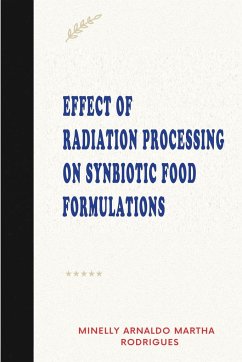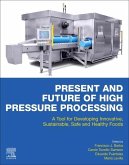Synbiotic foods are in great demand as they meet the consumers' quest for a healthy life. Most of these formulations available in the market are dairy based and may not be suitable for vegans and those with milk protein allergy. Hence, synbiotic foods based on non-dairy matrices such as cereals, millets and legumes would be a better alternative to these populations besides adding variety to such foods in the market. Processing is an integral part of food product development. Hence, identifying suitable processing techniques that will improve the prebiotic potential of foods would further ascertain their health benefits This book is based on a project of studying the effect of radiation processing in comparison with malting and enzymatic treatment on the prebiotic potential and bioactive properties of cereal, millet and legume based synbiotic formulations. The methodology applied is that cereals (Rice, wheat), a millet (Finger millet), legumes (Green gram, Bengal gram, white peas, and soybean) and their blends (7:3) as well as monocultures and mixed cultures of probiotic lactic acid bacteria (PLAB) were screened. The most effective prebiotic blend and mixed culture were selected for the development of a synbiotic food formulation. In order to identify the most suitable processing technique that would improve the prebiotic potential of selected blend, irradiation (2 kGy or 10 kGy), malting and enzymatic treatments were applied. Blends of cereal/millet-legume were found to be effective substrates for the growth of monocultures of PLAB as compared to individual substrates. Finger millet-soybean (FM-SY) blend was found to be the most efficacious as evidenced by higher growth and acidification. Mixed culture of all three PLAB was found to be more effective in lowering pH below the desired level of 4.5. All the three processing techniques facilitated growth of cell counts to 9 log cfu/mL within 16 h in the FM-SY blend as compared to the unprocessed FM-SY blend which required 24 h for the same. The nutritional profile was not influenced by either processing or fermentation. Storage studies revealed a temperature of 5°C to be more suitable for retention of cell viability up to 8 weeks. All FM-SY blends were found to protect PLAB and enhance their survival when exposed to simulated gastrointestinal transit. The strains demonstrated good adherence properties in vitro indicating their potential for colonization of the host. Antibiotic susceptibility testing confirmed their safety for applications in synbiotic foods. These strains also showed cholesterol uptake from growth media and bile salt hydrolase activity. Furthermore the enzymatically treated FM-SY synbiotic formulation (E2) was found to have higher antimicrobial, antioxidant and ACE inhibitory activity. Functional properties of the blends were found to be better in the unprocessed, malted and irradiated-10 kGy FM-SY blends as compared to the enzymatically treated blend (E2). PLAB in the matrix of FM-SY blends were found to be more tolerant to heat stress as compared to free cell suspensions of the organisms. Synbiotic spreads, synbiotic salad dressings, synbiotic kadhi and synbiotic pani were developed using the FM-SY blend treated enzymatically (E2) and were found to have high sensory acceptability. It can be concluded that cost effective and nutritious synbiotic food formulations could be developed by the use of processed finger millet-soybean blends. Though use of irradiation and malting was found to improve cell growth and physicochemical properties, enzymatic treatment enhanced the bioactive potential of the formulations significantly.








